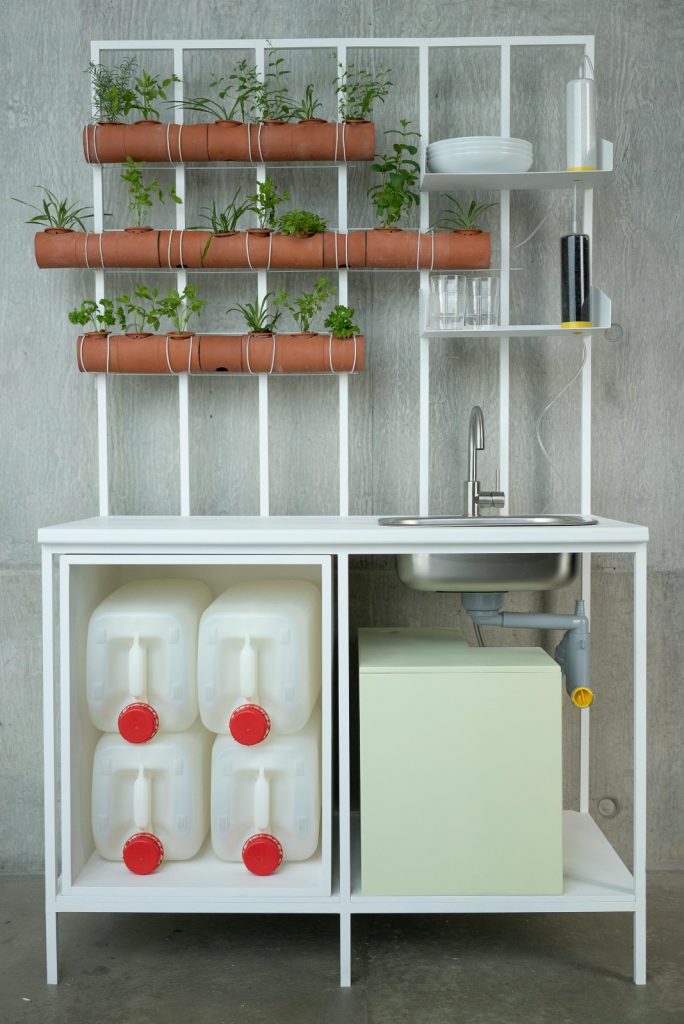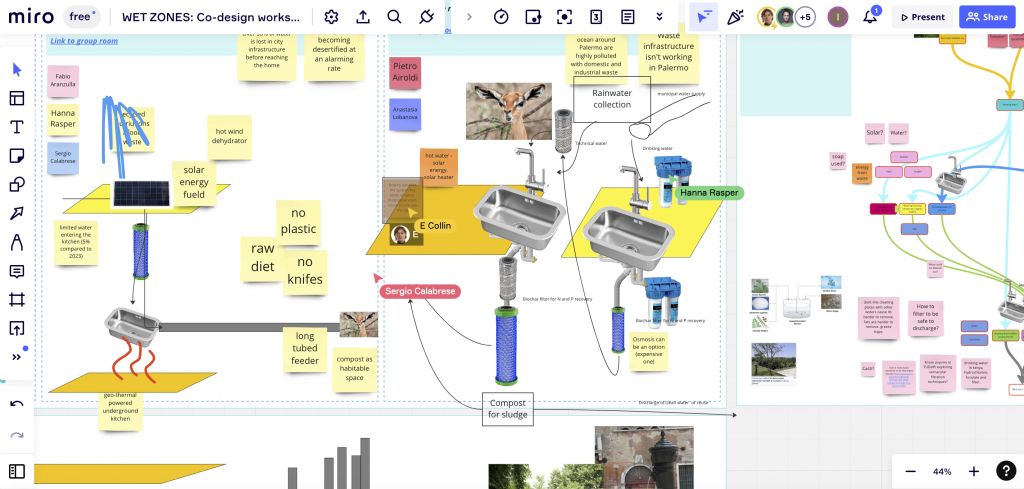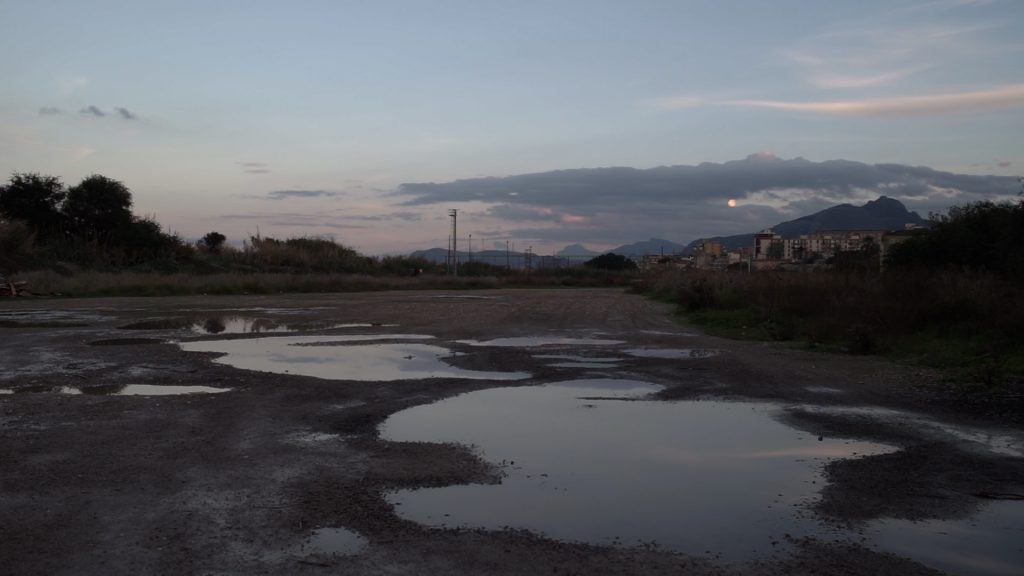By Izabela Anna Moren
Izabela Anna Moren: Since we met for Pandemos in 2020, you’ve been collecting research on land saving practices, plant behaviour and the ecology of water. Where did your work start and how has your approach changed over time and geography?
Eliza Collin: When living in Sicily from 2017 – 2018 I became fascinated with the local connection to the land and the place’s specific knowledge of foraging and stories connected to different species. I observed the complex relationships which revolved around growing practices, the distribution of water and the mysteries around the systematic burning of the land. It led to me to apply for Studio Rizoma’s inaugural open call Pandemos in 2020 which gave me the resources to be able to document some of the conversations I was having with local people connected to the land. This led me into a deep dive into the relationships between urban spaces and their surrounding landscapes, into our perceptions of the water cycle, our displacement of water resources, the transferal of waste within those and the effects these displacements have on plant and animal wildlife.
On my return to London in September 2020, where I was enrolled in the MA Material Futures, I began developing a modular city kitchen. One which would challenge the way domestic spaces were designed to use water and the lack of agency they currently have in its collection, use, remediation and discharge. With no engineering or interior architecture training it was a complicated process. I drew on multidisciplinary expertise and was led by a pure fascination with the relationships between design and the behaviours it suggests to us, and a desire to explore how my own multidisciplinary skills could have an effect in this area. London and the South East of the UK has its own complex water futures, countering the general understanding that the UK is a ‘wet and rainy place’. What I found truly problematic is that the domestic spaces are often the ones demonised for their water consumption. Regardless of the fact that actually between 20-30% of our domestic water resources in London are lost across the city’s distribution network and agriculture is the highest user of freshwater withdrawals in the UK. In fact 70% of freshwater withdrawals worldwide are actually used for agricultural purposes.
When you invited me back to Palermo to develop a kitchen for the city, I was excited to see how the concepts would translate back to the area in which the research began. The kitchen was always designed with the intention of being a blueprint, accessible to global communities to develop and adapt at will to their local situations which tend to vary greatly. Palermo presented an entirely new case study, with different water, material, production and waste cultures. It also presented me with different perspectives. Over the years my practice has leant towards enabling a non-human-centric voice to come through the work, my existing connection to the wildlife around the city enabled this process to evolve also with the help of ecologists Sergio Calabrese and Geraldina Signa.
My design work isn’t a conventional process, it is lengthy and multi layered, working through self-developed methods of primary research and co-design processes, attempting to address non-human needs as well as human, aiming to develop designs which are authentically integrated into local communities, designs which are thoroughly user tested and which don’t unnecessarily replace existing models.

Acqua Dentro Kitchen
IAM: In London you worked on ACQUA DENTRO, a London prototype for a kitchen with plant filters, which is how we initially started thinking about a water-recycling kitchen in the context of Sicily. How did ACQUA DENTRO function?
EC: For the Acqua Dentro kitchen I started very speculative. I researched future water predictions and imagined into them my ideal scenario whilst working with two experts innovating in this field. Michael Oteng-Peprah who is a Ghana based Environmental Engineer, Lecturer in the Water and Sanitation Unit in the Department of Chemistry, University of Cape Coast and who recycles all the water in his own home whilst promoting the use of recycled water for irrigation in Ghanaian villages. Michael conducts fascinating research into the behavioural science around drinking remediated waste water. The other expert mentorship I had at the time was with PhD student Dr Dominic Clyde-Smith, Honorary Researcher and Head of Research at We Design For …, University College London. Together we developed a speculative water recycling kitchen for London, which explored the ways to interlink circular water systems with regenerative filters and city farming, in an attempt to make cities more self-sufficient and give agency to domestic spaces within the city.
The idea of the kitchen was based on a mixture of Michael and Dr Dominic’s research. It took mains water which entered via the main tap and exited through the sink’s downpipe through a series of filters to remove large solid pollutants, soaps and fats, flowing up into a series of terracotta plant-based and regenerative filters, designed to keep the water circulating and filter out organic pollutants through the microbiomes around the plant roots. My dream was then that this water could be drinkable again, whilst the plants it was feeding would end up on the dining table. What I found was that UK and EU regulations restrict the use of recycled water in this way, and that the research for this kind of system on such a small scale was still emerging, easier at a whole city scale but even then, people would fear the recycled water. Whether this is through a mistrust of the ability of natural systems or the mistrust of our own systems and behaviours and how this contaminates water, it wasn’t clear. I think it’s a combination of the two.

Images from the WET ZONES workshop: Co-design by Eliza Collin
IAM: When we think of water, we rarely consider the complexity of the entire cycle of biological, economical, logistical and administrative processes involved. What are the main criticalities here in Sicily and what are possible interventions?
EC: When we are in school, as with most things, we are taught a very simplified version of the water cycle. As we get older, we are rarely taught to challenge these ideas but in recent years, as river and lakes dry, sea level rises and rainfall becomes increasingly unstable, it begs the question, what is the water cycle and how does it function? Though we know water is relatively infinite, I have found in my research that the question we should be asking is not of its quantity but of its location and its quality.
In Sicily, I have been gathering different water experiences and perceptions, by consulting with local people and scientific and infrastructural experts. It has painted a complex and somewhat disjointed picture of the situation for me but one which shimmers into reality through people’s water behaviours based on their individual realities. From the interviews and workshop, I have identified three main areas of focus.
The first is the impression that the basin of Palermo itself is not a water stressed area. It is fed by multiple springs which though many of them are no longer in use, enough still remain to feed the city. It also has at least four rivers still running through it, though three of them have been highly modified for agriculture and artificial wetlands potentially since the time of the Greeks and are now canalised underneath the city. As it happened in Palermo, rivers which ran through cities often became waste streams and were covered to protect people from the spread of infectious diseases and bad smells. The ‘ghosts’ of these rivers, as mentioned by Palermo-based artist Gianluca Concialdi, often reappear. Secondly, over 50% of the water feeding the city is being lost, this number varied greatly with some people even saying it was no longer a problem but according to this article it currently sits firmly at 54.6%. This means that Palermo is taking over 50% more water than it needs, and though Palermo is not a water-stressed city, this over consumption will be indirectly affecting the rest of the island which is increasingly water-stressed. Finally, upon speaking to ecologists studying the Oreto river and Palermo bay, as well as people which live along the Passo di Rigano river, much of the water which runs through the city, be it through domestic pipes or storm water run-offs, is not then cleaned sufficiently for discharge back into marine environments. This results in pathogens such as E.Coli being at such high levels that it is illegal to swim.
On top of these three main issues, the rain cycle in Sicily has been majorly disrupted. Some believe due to deforestation and some do not, but it is undeniable that large intense rains, called in Italian ‘bomba d’acqua’, that lead to massive floods and topsoil runoff, are becoming more and more frequent.

Image from the video WET ZONES: Interview with Architect Manfredi, by Eliza Collin
IAM: You often speak about water “futures” instead of “future” and in fact also WET ZONES is more than one. Why plural in this context?
EC: Last year I was working for the UK government-based design and research studio Policy Lab. Whilst I was there my mind was opened to the pluralising of the future by my colleague and line manager Alex Fleming. In her presentation, Alex drew our attention to the power and agency created when keeping the future as a plural concept. Without this, our minds automatically assume there is one future. Be it positive or negative or somewhere in between, this is so easily prescribed to us by people with power, the likes of Silicon Valley, our governments or Hollywood. We begin to lose a sense of agency for a future where in fact we still have a huge amount of control. Keeping ourselves open to many multiples of potential futures means we keep ourselves open to the concepts of our own power.
When it comes to WET ZONES instead of WET ZONE, this looks at something slightly different. Currently the way we see cities and city infrastructure is in the attempt to keep water separate. Water has been put in the dangerous category, and sometimes rightly so. It can cause floods, pollution, rot and other kinds of damage. These are all the more likely when it’s coming into contact with the built environment.
WET ZONES explores the logic behind our water behaviours and assumptions. It looks into ways to keep us closer to water in the moments it passes through our living spaces, and hopefully giving people a way to speculate on water futures where our cities can live more in harmony with wet zones. Many of our cities have been built on floodplains and salt marshes, we have lost vast swathes of important habitat due to urbanisation in fertile lands. As Sicilians have historically built pride on being custodians of water, how can we bring back this spiritual sensitivity? Can we reimagine cities which dwell within these ecosystems, enabling them and benefitting from them?
IAM: Margarete Schütte-Lihotzky’s Frankfurt Kitchen was the first rational kitchen design, introducing what is still now the prevalent kitchen model, and drastically changed behaviours in the domestic and social sphere. Are there some similarities with possible future water recycling or other features?
EC: Margarete Schutte-Lihotzky revolutionised domestic space, primarily for women. Freeing them to pursue activities outside of the home and paved the way for further domestic interventions which enabled speed and efficiency when it came to home tasks. Sir Edwin Chadwick introduced ideas to London around the circulation of water, water became something private, something hidden and a resource which utilised fluid waste flow out of the city. Sir Edwin Chadwick’s ideas led into the development of new systems of urban sanitation and the opening of public sewage systems. Many of these interventions have been revolutionary but specifically from an anthropocentric perspective.
‘Chadwick imagined the new city as a social body through which water must incessantly circulate, leaving it again as dirty sewage… The brisker the flow, the fewer stagnant pockets that breed congenital pestilence there are and the healthier the city will be.’ If we did not act in this way, the city ‘can only stagnate and rot’. (Illich, 1986, p. 43)
If we are to consider the post-Anthropocene in contemporary and future design decisions then how does this change our domestic spaces? If we think about what water needs, how does this change our decisions? And if we recognise that weather systems are changing, then how do we adapt?
As climate change evolves, the way we live must change. We can keep the innovations and discoveries of the past but they must tap into the issues of today. One of my favourite kitchen edits which is so easily adaptable is the idea of having multiple taps and multiple sinks, all for different uses, part of a fluid system which connects and staggers water usage. Another is the idea of removing cutlery and crockery all together, in the attempt to avoid polluting water in the first place and encouraging easily compostable disposable waste, feeding into the circle city farming model. Each of these interventions are so country, city, area specific, that we as designers need to realise that when we design, we design locally with a modular mindset and an openness to adaptation. One size does not fit all, we need to create the tools for global communities to make their own choices.
Many thanks to the following people for the ongoing support with the WET ZONES project:
Peter Scheer, Marginal Studios, Izabela Anna Moren, Gianluca Concialdi, Anastasia Lobanova, Manfredi Leone, Genny Petrotta, Giorgio Mega, Sergio Calabrese, Geraldina Signa, Caterina Miranti, Aterraterra, Pietro Airoldi, Vanessa Rosano and Zuri Camille de Souza.
